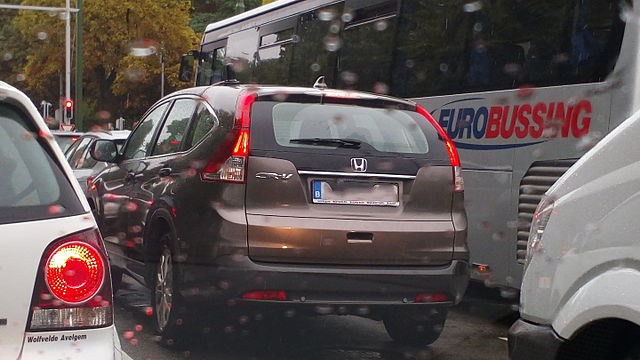The expanding width of cars in various categories has become a pressing issue, hindering urban mobility and parking, as revealed in a report published by the NGO Transport & Environment (T&E) on Monday.
The study sheds light on the challenges posed by the evolving dimensions of vehicles and their impact on urban infrastructure and safety. It states that new cars in Europe have been widening at an average rate of 1 cm every two years, with approximately half of the newly sold vehicles already surpassing the suitable width for planned street parking spaces.
The 100 best-selling cars in Europe have collectively increased in width by an average of 2.5 cm since 2018, rising from 177.8 cm to 180.3 cm.
This steady growth in vehicle dimensions is underscored by data from the International Council on Clean Transport, which reported that the average width of cars in the European Union was just 170.5 cm in 2021.
Notably, popular models in Europe, including the Peugeot 3008, Renault Clio, Skoda Fabia, and the compact Fiat Panda, have seen their width expand by 3 cm to 5 cm in their latest versions. Even the iconic Mini, in its SUV iterations, now exceeds 1.80 metres in width. Germany, the UK and Spain lead the pack in terms of purchasing the widest vehicles, according to the report.
Luxury SUVs lead the way
The most significant surge in width is observed in luxury Sports Utility Vehicles (SUVs), such as the BMW X5, X6, and XM, which surpass two metres in width. The Land Rover Defender, Audi Q8, and Volvo EX90 are also approaching the two-metre mark (with mirrors folded).
In Belgium, the Volvo XC40 SUV was named the most popular car in the country in the first quarter of 2023 and also topped the lists for most popular car by region, fuel type and buyer type. The Volvo XC40 was also named the number one vehicle in Flanders and Brussels. Sales of the Tesla Model Y (another SUV) increased towards the end of 2023, but remained behind the Volvo in terms of popularity in Brussels for the entire year.
Not only do SUVs take up more of the road, but the International Energy Agency also reported last year these vehicles are the second-largest source of increased CO2 emissions globally between 2010 and 2018, ahead of even heavy industry or aviation. If consumers continue to buy SUVs at the current rate until 2040, it will wipe out the emissions savings of 150 million electric vehicles.
Related News
- Drive for zero road fatalities: EU proposes SUV ban for new drivers
- Paris to hold referendum on higher parking fees for heavy SUVs
- Too big and antisocial: Brussels looks into anti-SUV measures
Last year, a number of SUVs were targeted by environmental activists in Brussels. They flattened the tyres of several vehicles in the Flagey area to protest against the number of large luxury vehicles in the capital.
Around the same time, the Brussels Government began investigating the possibility of whether and how it could keep SUVs away from the city, stating that SUVs are too big, heavy and, above all, dangerous.
The Brussels-Capital Region commissioned a study to identify the problems and opportunities in a bid to follow the example of Paris, Lyon and Grenoble in France and Amsterdam in the Netherlands, which have all banned SUVs from central city areas.
In a statement, Nicolas Raffin, spokesperson for T&E France, emphasised the tangible consequences of this trend on city streets. "The increasing size of cars has concrete consequences on our streets: large SUVs and American-style pick-ups do not fit in the intended spaces and encroach on pavements or the road. They endanger cyclists, pedestrians, especially children, and all other motorists."

